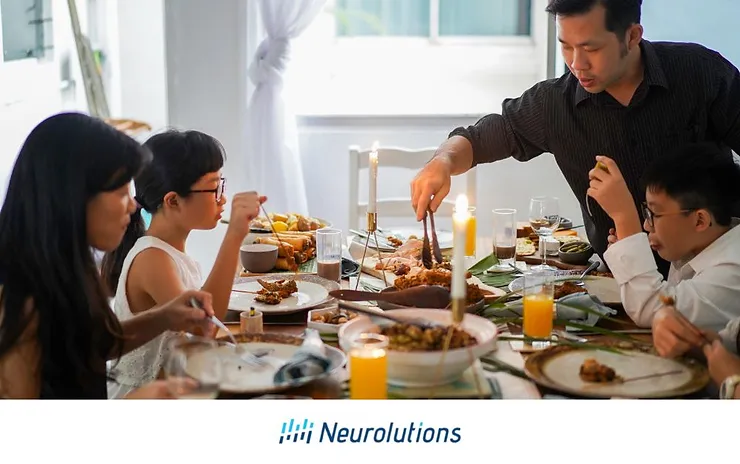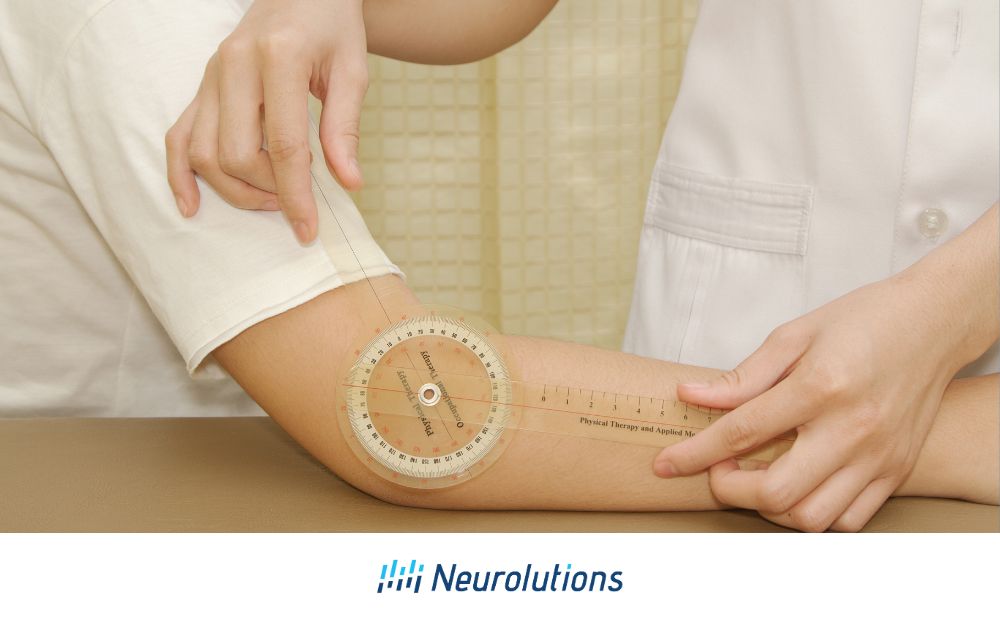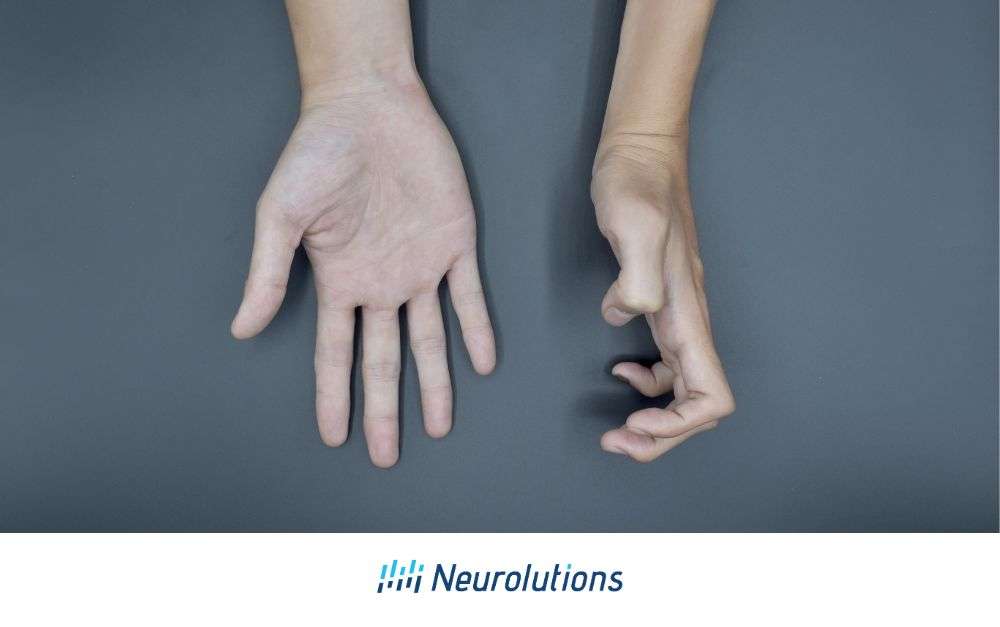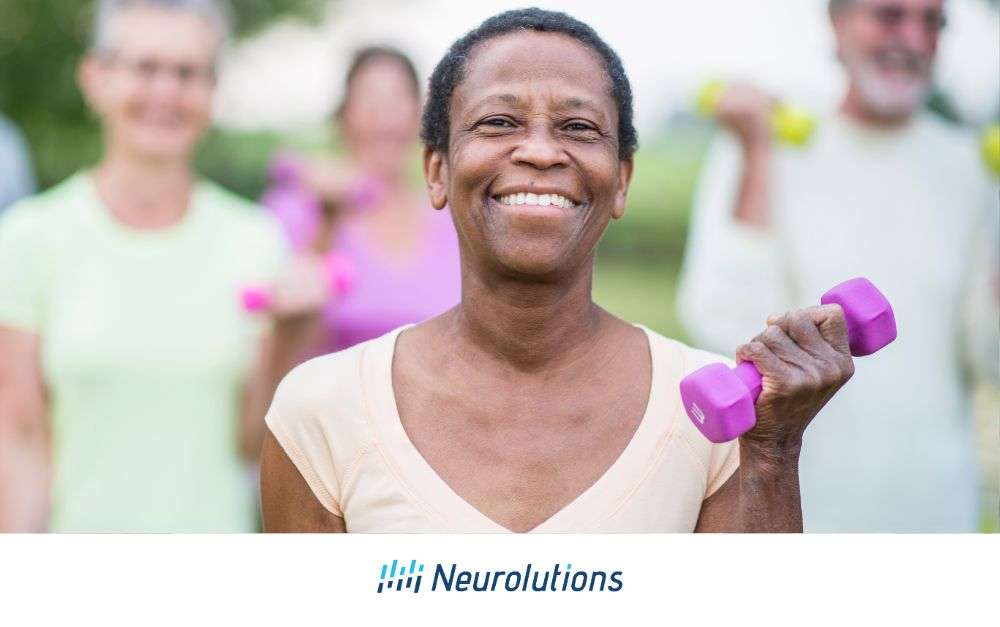Stroke survivors, their loved ones, and rehabilitation specialists worldwide have been on a mission to find and engage in interventions that provide benefits for recovery of lost motor skills after stroke. Tasks and exercises that facilitate the use of the impaired arm, leg, and trunk are encouraged and hold merit as part of the rehabilitation care plan. In other words, using, moving, and challenging the impaired limbs as much as possible during meaningful activities is crucial for making changes in the brain for learning.
But what does a stroke survivor need to do if they cannot yet move because of severe paralysis? Or, what does a stroke survivor need to do if they cannot yet conceive thoughts of how to start the movement or coordinate the movement?
The answer is believed to be related to activating motor networks in the brain that drive movement. Stimulation approaches often referred to as “motor priming” interventions, are associated with changes in neuroplasticity that are associated with improved movement. (8)
Although there is an ongoing debate, motor priming exercises are known to stimulate brain cells located in the parietal-frontal circuit known as “mirror neurons.” Mirror neurons are activated when we watch someone perform an activity, when we think about moving, or when we observe our own body going through the movement. Scientists are still learning more about mirror neurons, what exactly they do for us, and how we can leverage the mirror neuron system to enhance performance in the healthy population as well as the neurological population.
This article highlights 5 stimulation exercises used to prime motor systems in our brain responsible for the conception, intension, and execution of movement required for function.
These exercises, or interventions, are 1- mirror therapy, 2- mental practice, 3- action observation, 4- bilateral arm training, and 5- brain-computer interface.
While each exercise uses a different approach and protocol in stroke recovery, they complement one another by targeting the underlying root cause. Priming can be categorized as a restorative intervention that reduces impairment by targeting underlying neural mechanisms in stroke and other conditions involving the brain and nervous system. (9)
Mirror Therapy for Stroke Rehabilitation
What is Mirror Therapy?
Mirror therapy is an intervention that uses the reflection of the unimpaired limb moving in front of a mirror. The impaired limb is placed out of view, hidden behind that same mirror.
How does Mirror Therapy help with Stroke Recovery?
Mirror therapy is a motor priming approach used for stroke recovery, most often used and studied in the upper limb. It is based on evidence that observation of movement or a task activates the same sensory and motor areas as execution.
Neuroscientists believe that use of the mirror therapy “tricks the brain” via triggering specialized mirror neurons. The brain ignores the fact that it is not receiving signals of feeling and movement from the affected limb because it cares more about the visual feedback from the mirror to validate movement. In other words, the mirror provides proper visual input so the brain can “remember” how the hemiplegic limb should move. The premotor cortex is important to neuroplasticity and is responsive to visual feedback. (10)
Common diagnoses acquired brain injuries like a stroke, traumatic brain injury, or even a brain tumor that disrupted areas on one hemisphere of the brain involved in sensation and movement. Research has supported mirror therapy on neurological conditions where there is a clear lesion on one side of the brain.
Mirror therapy is appropriate for an upper limb with no or very little movement. It can also be used on an individual who has more movement but perhaps has personal neglect and needs help processing that his or her hand belongs to their body in order to be incorporated in daily tasks.
Conclusions from data collected from 11 studies of a total of 347 patients provided some evidence that mirror therapy may significantly improve motor function of the upper limb in patients with stroke. (11)
According to analysis from EBRSR Stroke Rehabilitation Clinician Handbook, mirror therapy may improve motor function, dexterity proprioception, and stroke severity, but the literature is mixed regarding improvements in ADLs, spasticity, and muscle strength. (10)
It should be noted that mirror therapy is extensively being studied in patient populations to reduce phantom limb pain (i.e. persistent pain following a limb that has been amputated). Mirror therapy has shown beneficial effects for pain reduction with phantom limb in the short-term. Long-term benefits continue to be explored. (11)
How to do Mirror Therapy
Mirror therapy is regarded as low-tech and affordable. You might be surprised that all you need is a mirror- and a box- if you want to make one on your own. There are also manufactured mirror boxes available on the internet for purchase. (insert links and pictures).
The mirror secured to the side of the box needs to be vertical (i.e. no slant). Place the impaired hand/forearm inside the box where it is hidden from view. The individual will be moving their “good” arm and hand while watching the reflection of it in the mirror. It provides the illusion as if the limbs are functioning and operating in sync.
There is no universal exercise protocol for mirror box therapy.
To get started, first ask:
”What movements are difficult and should be targeted?”
“What are some functional activities that could be very meaningful to work on and hold attention to?”
Basic exercises may include opening and closing the hand, flexing and extending the wrist, turning the forearm up and down, or tapping fingers on the table. Functional tasks can also be performed using one hand (e.g. picking up small objects, grasping and releasing a cup, writing/drawing, or folding a hand towel).
Mirror therapy sessions typically range from 20-30 minutes at a time and incorporate 5-10 exercises. High repetition and concentration on form- not speed- of the movements is emphasized.
Mental Practice for Stroke Rehabilitation
What is Mental Practice?
The mental practice involves practicing a simple or complex task using only mental power. Often regarded as mental imagery or visualization, mental practice is a natural and somewhat automatic process that our brains engage in when attempting to learn or refine skills. It is theorized that motor learning may take place after the brain has extensively rehearsed the activity in an effort to transition to physically carry out the movement.
How Does Metal Practice Help with Stroke Recovery?
Following in the footsteps of strong research on mental practice and athletic performance, there has been increasing interest and attention on the treatment effects and efficacy of mental practice in stroke and other neurological conditions. The majority of published research has investigated changes in upper extremity function, although there is ongoing research on the lower extremity as well.
When a stroke survivor has limitations performing the action because of disruption to neural networks corresponding to movement, it has been shown through imaging studies that visualizing the movement still excites the same areas. Mental practice over a period of time may therefore serve as a catalyst to initiating movement or enhancing the coordination of movement needed for successful execution and function.
The mental practice may produce improvements in motor function and muscle strength, but the evidence is mixed regarding improvements in ADLs. (10)
How to do Mental Practice
Mental practice can be used in the early days post-stroke if the individual has the ability to conceive the movement. It can continue to be used well into the chronic phase after stroke to continue to improve motor performance.
During mental practice, picture yourself performing an activity that incorporates motor skills using only your mind. Try to avoid moving your muscles and joints while you are imagining the movement taking place. It is recommended to have your eyes closed during therapy to avoid outside distractions. Throughout this period of intense focus, you will only be having the intention of movement and the sensory experience that is paired with the task. Rehearse all the steps that it takes for execution.
Until you become more experienced with mental practice, start with one simple action, such as visualizing your hand lifting off your lap, reaching for your phone, and opening your hand in order to hold the phone. It may help to repeat this single action over and over until you mentally master the “thought” of how to perform the action.
When you are ready, add more to the sequence of the visualization, such as holding the phone, imagining how heavy it feels in your hand, and bending your elbow before putting it to your ear.
You do not need any unique resources or equipment to perform mental practice unless you want to follow audio guidance that walks you through the process.
Mental practice sessions are carried out in a variety of ways in rehabilitation. Depending on available time, the desired activity will be rehearsed for 5-30 minutes PRIOR to trying the physical activity shortly after. Another popular option is to perform mental practice AFTER the task has been physically performed if the individual has some capacity to carry out the movement.
Action Observation for Stroke Rehabilitation
What is Action Observation
Action observation builds off of mental practice and is also considered a priming neurorehabilitation tool for stimulation of the motor, visual, and cognitive systems.
Though the title sounds sophisticated, the concept is straightforward: an individual observes another individual performing an action (i.e. an activity). Both children and adults learn by watching someone doing something and then imitating it. Imitating is a strategy that can be used in stroke rehabilitation.
How Does Action Observation Help with Stroke Recovery?
It is well-accepted that observation of actions performed by others activates the same neural networks responsible for the execution of the same actions. (12-14)
As with mental practice, action observation is thought to increase excitability in damaged areas of the brain that coordinate planning and executing the movements (15). Learning may be able to take place from one task to another if there are noticed similarities.
Action observation may be beneficial for improving dexterity and spasticity, but not muscle strength. The evidence is mixed regarding improvement in motor function and ADLs. (10)
How to do Action Observation
Action observation therapy is accomplished most commonly by observing another individual performing a task and then trying it themselves. The process goes back and forth as many times as needed until a skill shows improvement and learning is retained.
Another method is the use of video clips that loop through parts of the task or the whole of the task. For example, if the goal is to learn how to manipulate a key to put in a keyhole, a video may first repeat a small part of the task (i.e. picking up the key) and have the viewer repeat it soon after observing the video. Next, the video may add additional components, such as turning the key in the hand and eventually aligning it to fit in the keyhole. The individual imitates this process to the best of their ability.
Although research groups have designed protocols for the length and duration of time spent performing action observation, there is not a gold standard protocol. However, it is typical for sessions to last as long as thirty minutes and can be performed as many times a week as desired, changing up the observed activity as needed.
Bilateral Arm Training for Stroke Rehabilitation
What is Bilateral Arm Training?
Have you ever noticed that most of what we do with our hands entails not just one of them, but BOTH of them? The meaning of bilateral implies the use of two limbs. Typing, hanging a picture, cooking, dressing, driving, sports- even handwriting- all requirements are enhanced using two limbs!
When able, our brains work better when there is neural communication crossing between both sides of the brain.
Bilateral arm training is a type of intervention that uses the brain hemisphere not affected by the stroke to train and improve functional connectivity on the lesioned brain hemisphere.
How Does Bilateral Arm Training Help with Stroke Recovery?
The idea of having “the good side train the bad side” is a commonly utilized rehabilitation approach for stroke survivors with limited movement (16).
In Stronger after Stroke, the author relays that bilateral arm training is appropriate for stroke survivors that have very limited amounts of movement for two important reasons:
- Bilateral arm training may initiate the process in both the upper and lower extremities in proximal locations close to the body
- A theorized mechanism (referred to as central pattern generation (CPG)) residing in the spinal cord stimulates natural rhythms of the nervous system and may enhance communication over time with the brain. An example of this infants (held suspended by their trunk) are known to take steps before touching the ground.
According to research, bilateral arm training may improve motor function, but not muscle strength. The literature is mixed regarding bilateral arm training for improving dexterity and activities of daily living (10).
How to do Bilateral Arm Training
Bilateral arm training can occur when both arms do the same movements at the same time (symmetrical, or “in-phase”) or when both arms do the same movements but timed differently (asymmetrical, or “anti-phase”).
An example of bilateral arm training done symmetrically (mirror image) is pushing/pulling a rolling pin, taking a cup out of the dishwasher at the same time, unison drumming, or raising a dowel overhead while gripping it with both hands.
An example of bilateral arm training done asymmetrically (working in opposite directions), is wiping a table in opposite directions, alternating drumming, or taking a cup out of the dishwasher one hand at a time.
Traditional rehabilitation technology equipment (i.e. arm/ leg bikes) as well as exercises (free weights or dowels) offers a version of rhythmic bilateral training. Additionally, bilateral training is incorporated into modern and state-of-the-art technology equipment.
Brain-Computer Interface for Stroke Rehabilitation
What is Brain-Computer Interface?
Broadly, brain-computer interface (BCI) devices are systems that control an external device using one’s brain signals. Using thoughts alone, external controls and devices can be operated to complete the user’s intended task.
Most of the time, BCIs utilize a three-part system:
1- sensor on the brain reading the frequency of activity in different areas of the brain
2- computer that processes the information from the brain
3- external device or output
The purpose of most brain-computer interface devices is to restore motor intent by transmitting neural recordings to create motor output, such as completing a functional task. Read more about brain-computer interface devices here (insert our NL blog on BCI).
How Does Brain-Computer Interface Help with Stroke Recovery?
There is clinical evidence that non-invasive BCI studies in the chronic stroke population proved clinically significant motor improvement in the upper extremity. A meta-analysis showed evidence that BCI training added to conventional therapy may enhance motor functioning of the upper extremity and brain function recovery in patients after stroke. (17)
Findings from two recent studies support that the “coupling” of specific brain wave frequencies related to motor learning and skill acquisition occurred with regular BCI sessions and was strongly correlated with motor recovery outcome measures. (18, 19)
In addition to stroke, it is predicted that as brain-computer interfaces refine their use in the clinical population there will be a growing number of applications to assist individuals with physical and/or functional limitations.
How to do a Brain-Computer Interface
Brain-computer interface therapeutics fall into two categories: invasive and non-invasive. Invasive approaches require surgery, while non-invasive approaches do not require surgery. Both are in varying degrees of clinical trials and working with regulations within the US.
Consult with your physician about brain-computer interface therapeutics to find out about available clinical trials that may be appropriate for your needs and condition.
Summary
All of these exercises and/or tools are not intended to be the sole intervention used to enhance recovery and rehabilitation. Rather, they complement other interventions that are essential to include in rehabilitation care plans.
Because the design of the interventions is regarded as low risk for injury and also takes a fair amount of time to complete, it is not uncommon for the priming activities to be designated as part of a home program. After the individual has demonstrated that they understand the concepts of the priming interventions, they can perform them independently at home. Intermittent therapist follow-up is recommended to ensure there is a progressive challenge and to assess intervention value and benefit.
Speak with an occupational therapist, physical therapist, physiatrist/physical medicine and rehabilitation physician, and/or neurologist to find out what combination of approaches may benefit you if you have had a stroke.
References
- Lloyd-Jones, D., et al., Heart Disease and Stroke Statistics – 2009 Update: A report from the American Heart Association Statistics Committee and Stroke Statistics Subcommittee. Circulation, 2009, 119(3): p. 480-486.
- Chapman B, Bogle V. Adherence to medication and self-management in stroke patients. Br J Nurs 2014; 23: 158–166.
- Feigin VL, Krishnamurthi RV, Parmar P, Norrving B, Mensah GA, Bennett DA, et al. Update on the global burden of ischemic and hemorrhagic stroke in 1990–2013: the GBD 2013 study. Neuroepidemiology 2015; 45: 161–176
- Gill HL, Siracuse JJ, Parrack IK, Huang ZS, Meltzer AJ. Complications of the endovascular management of acute ischemic stroke. Vasc Health Risk Manag 2014; 10: 675–681
- Saeed E, Ali R, Jalal-ud-din M, Saeed A, Jadoon RJ, Moiz M.) Hypercholesterolemia in patients of ischemic stroke. J Ayub Med Coll Abbottabad 2015; 27: 637–639
- Jørgensen HS, Nakayama H, Raaschou HO, Vive-Larsen J, Støier M, Olsen TS. Outcome and time course of recovery in stroke. Part I: Outcome. The Copenhagen Stroke Study. Arch Phys Med Rehabil 1995; 76: 399–405.
- Lawrence ES, Coshall C, Dundas R, Stewart J, Rudd AG, Howard R, et al. Estimates of the prevalence of acute stroke impairments and disability in a multiethnic population. Stroke 2001; 32: 1279–1284
- Stoykov ME, Madhavan S. Motor priming in neurorehabilitation. J Neurol Phys Ther. 2015 Jan;39(1):33-42. doi: 10.1097/NPT.0000000000000065. PMID: 25415551; PMCID: PMC4270918.
- Pomeroy V, Aglioti SM, Mark VW, et al. Neurological principles and rehabilitation of action disorders: Rehabilitation interventions. Neurorehabil Neural Repair. 2011;25(5):33S–43S
- http://www.ebrsr.com/sites/default/files/EBRSR%20Handbook%20Chapter%204_Upper%20Extremity%20Post%20Stroke_ML.pdf
- Xie HM, Zhang KX, Wang S, Wang N, Wang N, Li X, Huang LP. Effectiveness of Mirror Therapy for Phantom Limb Pain: A Systematic Review and Meta-analysis. Arch Phys Med Rehabil. 2022 May;103(5):988-997. doi: 10.1016/j.apmr.2021.07.810. Epub 2021 Aug 28. PMID: 34461084.
- Zeng W, Guo Y, Wu G, Liu X, Fang Q. Mirror therapy for motor function of the upper extremity in patients with stroke: A meta-analysis. J Rehabil Med. 2018 Jan 10;50(1):8-15. doi: 10.2340/16501977-2287. PMID: 29077129
- Fabbri-Destro M, Rizzolatti G. 2008. Mirror neurons and mirror systems in monkeys and humans. Physiology 23, 171–179. 10.1152/physiol.00004.2008
- Buccino G. Action observation treatment: a novel tool in neurorehabilitation. Philos Trans R Soc Lond B Biol Sci. 2014 Apr 28;369(1644):20130185. doi: 10.1098/rstb.2013.0185. PMID: 24778380; PMCID: PMC4006186.
- Kim T, Kim S, Lee B. Effects of Action Observational Training Plus Brain-Computer Interface-Based Functional Electrical Stimulation on Paretic Arm Motor Recovery in Patients with Stroke: A Randomized Controlled Trial. Occup Ther Int. 2016 Mar;23(1):39-47. doi: 10.1002/oti.1403. Epub 2015 Aug 24. PMID: 26301519.
- Levine, P. Stronger after Stroke: Your Roadmap to Recovery. 3rd Edition. Demos Medical Publishing; 2018.
- Kruse A, Suica Z, Taeymans J, Schuster-Amft C. Effect of brain-computer interface training based on non-invasive electroencephalography using motor imagery on functional recovery after stroke – a systematic review and meta-analysis. BMC Neurol. 2020 Oct 22;20(1):385. doi: 10.1186/s12883-020-01960-5. PMID: 33092554; PMCID: PMC7584076.
- Joseph B. Humphries, Daniela J. S. Mattos, Jerrel Rutlin, Andy G. S. Daniel, Kathleen Rybczynski, Theresa Notestine, Joshua S. Shimony, Harold Burton, Alexandre Carter & Eric C. Leuthardt (2022) Motor Network Reorganization Induced in Chronic Stroke Patients with the Use of a Contralesionally-Controlled Brain Computer Interface, Brain-Computer Interfaces, 9:3, 179-192, DOI: 10.1080/2326263X.2022.2057757
- Nabi Rustamov, Joseph Humphries, Alexandre Carter, Eric C. Leuthardt, Theta–gamma coupling as a cortical biomarker of brain–computer interface-mediated motor recovery in chronic stroke, Brain Communications, Volume 4, Issue 3, 2022, fcac136, https://doi.org/10.1093/braincomms/fcac136




